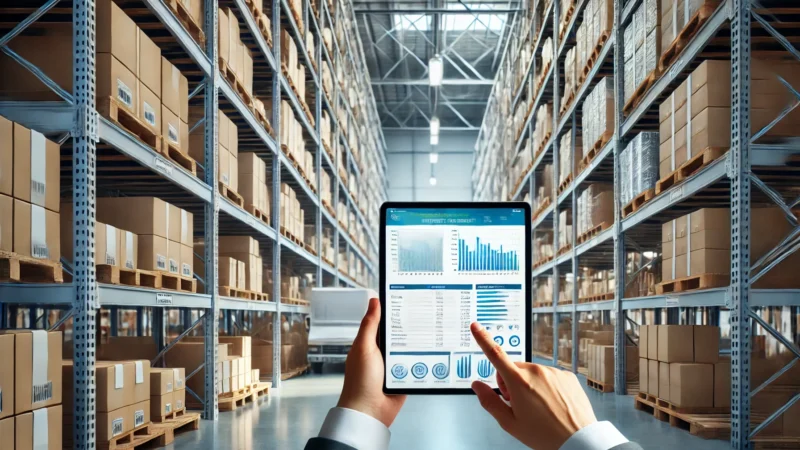Raptech - Jul 12, 2024 - 8 min read time

In the dynamic environment of Small and Medium-sized Enterprises (SMEs or SMBs), effective inventory management is crucial for distinguishing between thriving and merely surviving. Traditionally, managing inventory involves labor-intensive processes prone to human error, leading to inefficiencies, stockouts, and overstocks. However, the advent of inventory automation technology has brought about a transformative change, offering Small and Medium-sized Businesses the opportunity to streamline operations, cut costs, and enhance overall productivity. Let’s dive into the benefits and implementation of inventory automation for SMBs.
An effective inventory management system is crucial for optimizing the flow of goods and maintaining accurate inventory levels. It helps businesses streamline operations, reduce costs, and improve customer satisfaction. Here are the key features to look for in an inventory management system:
For a comprehensive overview of RFID technology, including its history and various applications, please visit www.bradyid.com/intelligent-manufacturing/what-is-rfid.
Small and Medium-sized Businesses face unique challenges in managing their inventory effectively. As they strive to compete in a fast-paced market, automating inventory processes can offer a substantial competitive edge. Here’s how Small and Medium-sized Businesses can successfully implement inventory automation to streamline operations, reduce costs, and improve efficiency.
For more information about application integration, visit IBM's comprehensive guide on the topic.
Implementing inventory automation in Small and Medium-sized Businesses is a strategic move that can significantly optimize your supply chain, enhance operational efficiency, reduce costs, boost customer satisfaction, and improve overall business performance. By assessing current processes, choosing the right technology, training your team, and continuously monitoring and optimizing the system, SMBs can successfully transition to an automated inventory management approach. Inventory automation not only simplifies inventory control but also provides valuable insights for better decision-making. As SMBs adopt these advanced solutions, they position themselves to thrive in a competitive market, ensuring sustainable growth and customer satisfaction.
Raptech - June 16, 2025 - 8 min read time

In a world where digital transformation has become essential, businesses are no longer asking if they should automate, but how far they can go. While many companies have adopted automation tools to streamline operations, few understand the depth and strategic advantage offered by modern procure to pay solutions.
The right solution doesn’t just automate workflows; it empowers procurement, enhances compliance, and drives measurable ROI. This is especially true for Raptech’s comprehensive P2P automation software suite.
The procure to pay (P2P) process covers the full lifecycle of procurement, from requisitioning and purchasing to invoicing and payment. Done right, it connects procurement and finance in a seamless flow of data, visibility, and control. Done poorly, it becomes a fragmented, error-prone process that drains productivity and increases risk.
Most procure to pay software solutions offer basic automation features. They digitize forms, automate approvals, and centralize documentation. While this reduces manual effort, it doesn’t tackle core challenges such as:
Procure to pay automation software must go beyond digitizing paper to become a strategic enabler. Raptech’s approach focuses on solving real operational bottlenecks through intelligent, adaptive solutions.
To truly optimize your P2P process automation, look for the following components in your solution:
Raptech’s integrated procure to pay solutions offer all of these features, tailored for mid to large enterprises seeking agility and scale.
Unlike standard procure to pay systems, Raptech’s platform is designed with business outcomes in mind. Here’s how we go beyond the basics:
By implementing Raptech’s procure to pay automation, companies unlock a range of strategic benefits:
When shopping for a procure to pay solution, keep the following questions in mind:
As digital transformation accelerates, the future of P2P process automation lies in intelligent systems that don’t just automate, but learn and adapt. Raptech is leading the charge by delivering an AI-enabled P2P procurement system that is fully integrated, modular, and insight-driven.
Raptech’s platform doesn’t just digitize workflows, it transforms procurement into a strategic advantage. By enabling smarter spend management, faster execution, and tighter supplier collaboration, it redefines what a procure to pay automation software can achieve.